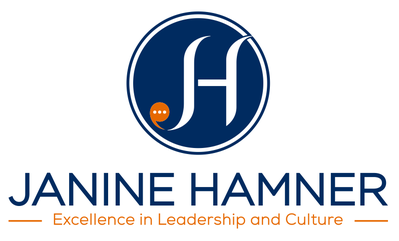
Leadership is a quality that can often spell the difference between success and failure. The ideal leader practices conscious leadership, allowing them to bridge the gap between themselves and their employees. In this episode, Janine Hamner Holman talks to business counselor and consultant Joel Volk about leadership. Joel shares what drove him to create his business, Hot Dog! Business Growth, and what he’s learned over the years as a GM and partner. Tune in and learn from Joel’s great business insights.
HOST: Janine Hamner Holman | [email protected] | LinkedIn, Facebook, and Twitter | Subscribe to my Newsletter! Book me to Speak!
—
Listen to the podcast here:
Delving Into Conscious Leadership
A Conversation With Joel Volk
What am I paying attention to now? The tension between what we can do and what we actually will do. I was talking with a client and he was talking about, “I don’t think I need your help to do this thing because I can do it.” He went on to tell me about all the things that were taking up his time and attention. What I got clear on is this: “You can do that thing, but you’re not going to because your time and attention are being taken up on all these other things!” Which brings me to this idea that I’ve known of for a long time, which is just because we can, doesn’t mean that we should. I’m sorry to “should” on you. But just because we can, doesn’t mean that we should. And, just because we can, doesn’t mean that we will.
This is where having trusted advisors that we can go to for help, support, coaching, development or whatever all the things are that we use all the people in our lives for. It’s where those people can be such great assets to us… which brings me to my guest, who is one of my trusted advisors and somebody who I got to know through a nonprofit organization that we work with together. His name is Joel Volk.
Do you remember It’s A Wonderful Life, how in the beginning, the young main character pushes a little button and goes, “Hotdog?” His company is called Hot Dog Business Growth. That’s the energy that I get from being with Joel. It’s fun to be with him. It’s interesting and challenging, and what Hot Dog Business Growth is about is helping the leadership of organizations understand and see their opportunities in a new way, and then based on these new understandings, move into those opportunities. He’s also great at helping organizations develop clarity around the values in and of their business, and to reflect those values in every day working of their businesses. I am thrilled to welcome Joel Volk.
Thank you so much. That’s one of the nicest things anyone ever said about me. There’s an old adage in sales, “Nobody buys a drill. They’re buying a hole.” Everybody needs a hole, so you have to buy a drill to get to the hole. That was exactly the impetus of naming the practice Hot Dog Business Growth from A Wonderful Life which has been a motivational film for me in my whole career.
If you think about it, it’s George Bailey. For those of you who don’t know it from a business perspective, I’ll share what it is. George Bailey was born into a family business. Even though he’s got ambitions, dreams and vision of his life beyond what that family business can do, he’s trapped by it because it was a family business. Without him being in that business, the town would have to succumb to somebody who was in a similar business, but is a bad apple.
The pressure of the family and the pressure of the community made him always feel trapped. He lived in a world where it was 1 step forward and 2 steps backward. Even though, in the very beginning of the film, the “hotdog!” is what he aspired to. He aspired to that feeling of greatness and success. In different times in my career, when I felt trapped by my business, I would watch that film and see it as George Bailey trapped. At different times in my career when things were going well, I would look at it through the feelings of success and community at the end of the movie. A lot of what I’ve gotten from my own role of being many years in one business and about seven years in the business before that is that feeling of community at the end.
Do you remember at the end where they toasted and George’s brother Harry says, “To my big brother, George, the richest man I know?” George wasn’t wealthy by money standards. He was comfortable and he made a living. Because he had made such a positive impact on the community, he had built a respectable business, one that the community relied on, he was viewed by his community, his family and finally, by himself, as the richest man he knew.
That’s what we aspire to as entrepreneurs. We aspire to that feeling of “hotdog!” That was exactly why I named it. I’m so glad you got that. Probably, everyone didn’t get that. I was a little bit worried about naming it that. I thought maybe people wouldn’t take me seriously, but I want it to reflect my sense of whimsy.
I do like to have fun. I once had a client. Her name is Libby Margo. She’s one of my early clients in business. I hope she’s still around. She was older than me at that time. I remember she was charming and made all her employees feel good. I remember commenting on that because my business was a business-to-business entity (meaning that I sell to other businesses, instead of selling to consumers). I used to go from company to company. When you walked into Libby’s company, everybody seemed to be enjoying themselves. I’ve talked to her about it and she said, “You’re spending eight hours a day with these people. Do you want to be miserable and mean, or do you want to have fun and make them part of your life?” That was early in my career. I didn’t always succeed in that. I can tell you that if any of my staff over there may be rolling their eyes like, “Which Joel is this?!?” I definitely could be that intense, impatient, sarcastic bully when I lose control.
I had to train myself not to be that person in order to grow my business.
Mitigate by anticipating. Share on XThat was wonderful and rich. I love this dichotomy that you painted of we have the one Joel, who can be a bit of a bully, want to get things done and can maybe micromanage or be a little bit of a pain in the ass. Our readers know on this show, I never swear like, “Oooohhhhh, she said a bad word.” I swear for accuracy. When we are in that mode that, “Get shit done. Take no prisoners. Bull in a China shop,” we are a pain in the ass. When we can drop into our heart, bring the whimsy, the joy and “hotdog!”, that’s when it’s great to be at work. It’s great to be around us. We energize other people, ourselves, and everything works so much better in that context when we can be that version of ourselves.
Not always natural and it’s something that you have to learn. God knows, I spent so many years trying to overcome my shortcomings when it came to that. I’m told by people that know me as a friend that I’ve got a great sense of humor. I know that at times, there would be employees of mine that say, “This guy has no sense of humor.” I didn’t like that guy any more than they liked that guy. I want to be laughing, having a good time and making sure that we’re all firing on all cylinders. That’s who I want to be, but it’s not always easy to be. I see that when I’m dealing with clients now. I see it where entrepreneurs often get wrapped up in what they want, but they don’t assume the discipline upon themselves. The employees get mixed messages.
I had a well-run client and company of mine. It’s an impressive company, very leading edge, two partners, neither one of them are following the standard operating procedures. They both can go off in different directions. The challenge is that the people, or teams, who get stuck in the middle not knowing who to follow or what to do. This is where I often work, with the teams that are looking for guidance from management that sometimes has the carts in front of the horses! I just got it where I wanted it and now, I’ve got to backpedal. It’s too much pressure. From the leadership’s perspective, they’re falling back to their relaxed position because before the SOPs were developed, they did it the way they did it. Now, discipline and training have to go backward as they grow the business. It’s interesting.
One of the things that I work with leaders on, which is part of what you’re alluding to, is what I call conscious leadership. It is getting clear about what are the ways in which we can bring out the best in ourselves and in others. The younger generations in the workforce, the Millennials and now the Gen Zs that are coming in after them, have been very effective in saying, “This is what we need. We need it to be this way. We need it to be like this.” In response, some organizations say, “Got it. That’s what we’re going to do.” Other organizations sometimes push back and say, “No. Screw you. That’s not what we’re going to do.”
One of the things that they younger generations are clear on that they want is a coach and not a micromanager. How do you help leaders and managers be a coach instead of a top-down dictatorial, “Do it my way,” “command and control,” micromanaging boss?
I don’t know if I have the answer, but I can tell you offhand, a couple of things come to mind. This is more of my years as a business owner. I can tell you that when people came to me showing me problems but that had suggestions, I was grateful that they took that heavy lifting off of me. I would ask for that because I would explain to them that I’m sure that before you came to my desk, you tried to sort it out and you gave it some thought. You’ve had half an hour or one hour a day, whatever time you’ve had to think about it. I now have ten seconds in which you’ve asked me.
If you had come to me with what the possibilities are, why you think they might be beneficial and why you think they might fail, then I can then add my experience, perspective and maybe help expand on it and come up with a plan with you, so we become collaborators. You become a partner in my success. If you simply come to me with a problem, then my initial reaction is that it’s an interruption. I might just blurt out an answer that may not give you enough information to move forward on. Training your staff to come to you with some possible solutions helps the leader become a better coach.
Secondly, and I was just talking about this with another consultant that I worked with at Hot Dog Business Growth, we’re trying to work out a way to make problem-solving into a game that has points. We’re putting our toe in the water for this. We’re going to try a couple of experiments. We were batting it around together a little bit. This is prematurely even talking about. However, the concept is to bring some reward to solving problems, bring some game and gamesmanship. The Gen Zs and the Millennials of the world play a lot of video games to unwind. Let’s give them some of that similar stimulus, give them something to succeed with little baby steps.
I love it for a couple of different reasons. Part of why I love it is because of how our brains are wired. The more positive reinforcement we can get, the more something is going to get into our brain. The more novel something is, the more our brain wakes up to like, “Here’s something new.” Doing something new and that has a reward system built into it are the things that make something stick. It’s the reason that I am entirely addicted to Farm Heroes. I can play that game and suddenly 45 minutes or 1 hour and 45 minutes have gone by because my brain is constantly getting these dopamine hits. It’s constantly succeeding. I’m playing for points.

Conscious Leadership: You’re spending eight hours a day with these people. Do you want to be miserable and mean, or do you want to have fun and make them part of your life?
In life, we don’t constantly get like, “That’s it, girl. Good job. Way to go.” That’s what the game does. Creating this playing for points is great, and it taps into this younger generation. If we tell the truth, this is what’s always motivated me is I am not of the younger generation. This is tapping into our need for appreciation.
Both suggestions fill that need. Coming in with a suggestion and allows me to say, “You got it. You don’t need me for this. Go for it. You are doing a great job. Everybody, next time you have a problem, you may want to run it by Janine. She did a great job of problem-solving, and that might be a more fluid solution than waiting for me to be available.” You free up your bandwidth. There’s a word in Yiddish that means a little bit of a good prideful moment. It’s like, “Yabba dabba doo!” No doubt about it, both of those things can fulfill that need to succeed, that need to be approved.
I love the way that you’re thinking about this because I was listening to a podcast that McKinsey did on “The Great Resignation,” and how many people are leaving their jobs and what our opportunity is as employers, as business owners, as people who work with business owners to retain staff. A big part of what they were talking about is that often in business, we have lost the appreciation economy. We have forgotten to appreciate people. We’re usually better at appreciating people when they get something right. We are pretty universally poor at appreciating people when they tried and even if they failed.
It’s shining a bright light on that appreciation economy. It might be the wrong damn solution, but I came to you with a solution, which gave you then a place to start thinking about it and a place to start bouncing off of and riffing off of. It’s so much easier to come up with ideas if you have a place to start! I come to you and say, “Here’s my problem. Here’s what I thought of.” You say, “Here’s why that’s not going to work.” Because I came to you with that solution, you can now easily see the way that it is going to work and let me help you get there too. Now you’re coaching me. You’re helping bring me along. At the end of that, I feel good. You can say to me, “That’s it, girl! Good job for coming up with a solution on your own,” even if it wasn’t the right thing in the end.
What’s a prickly or head-scratching thing that you like to work on with clients? What’s a big, messy problem that you love?
Where I tend to focus when I can is I like to make sure that every time we’re making a decision, it’s based on fortifying the stability of the company on some level. Here’s the premise, that at any time, you have to stop and start whether I have to regroup with a different product line because there’s a disruption in the supply chain, when we have to lose employees because somebody moves, when customers leave us frankly. Every time that happens, there’s a high cost of getting back to where we started.
If you’ve been in the stock market and you know you’re at a certain level and you lose 10%, to get back to even, you have to make 10%. To get back 10% more, you’ve got to go 20%. That’s the worst when it comes to small businesses. The cost of bringing and recruiting, training and supporting a new employee is super high. I like to make that very clear to the business leaders. As we start to strategize for how we’re going to grow the business, make sure that that one element of stability is something that we’re investing in. How do you invest in it with staff? Any guesses?
In a perfect world, what I would say is you hire this woman who I just met! Her name is Laura Hicks. She does this thing, which I think is brilliant. She does all different kinds of assessments. One of the things that they look at is what motivates individuals. Is somebody like me? Are they super motivated by appreciation? Is somebody super motivated by money? Laura said, “There are seven different basic things that motivate humans.” You figure out what those things are that are best going to motivate this individual and then you lean into that thing.
You invest in whatever it is that motivates these people. If you’re starting with the team that’s already selected and already humming along, you haven’t had a chance to evaluate them, which what motivates them is a little bit more challenging than if you’re starting from scratch, then you’re only hiring people that have the same maybe 2 or 3 stimuli that motivate them. The point is the same and then you compensate whatever those things are more than they can get anywhere else.
Money is the easiest thing to describe. If the going rate is $20 an hour, and I can pay you $22 an hour. For me, I like to have milestones and make sure they know that the longer they’re there, the more money they’ll make. I like to make sure that there’s an incentive, that the company maintains a certain margin. They get a bonus. If the company has different indicators if we get X amount of customers, new clients, new referral partners in the next X amount of months that there are bonuses that go their way.
The more positive reinforcement we can get, the more something is going to get into our brains. Share on XI like to invest and give them a future and letting the employees know how they’re going to succeed and what their path to reaching their personal goals is. I’d like to be very clear with employees that we want them to have a personal life that melds with their professional life. We want them both to thrive together. I like to make sure that they know they have that safe place to be a human being, where sometimes stuff happens and you have to pivot a little bit. I like to create that environment. When it comes to stability, product or location, there are other ways you can do it.
I have a client who came to me because he’s having supply chain issues and he was losing customers because he sold an item that’s consumable, that has to be normal. The patients needed their product on a timely basis because of his supply chain disruptions, he couldn’t fulfill the normal 3 or 4 days. We talked nothing more than, “I can’t control that, but I can control how I communicate with my clients. I can control how my staff manages orders.” We set up this whole program of, first of all, communicating to everybody that don’t wait until you run out of the last one before you order it. You’ve got to get on a pre-order basis.
Once we get an order, we’re going to track it, keep on track, keep on communicating and letting the customer know all the way down the line because it was the communication that he was losing customers. They couldn’t go anywhere else and get it the same. His competitors were having the exact same supply chain issues he was having. The only reason he’s losing customers is because he’s failing when it comes to investing and communicating to the client.
I’ve seen this as a customer over and over again myself. The depth into his company is saying, “You haven’t done anything different than your standard operating procedure once you recognize you have a severe problem.” By the way, people have to have what they need. They’re going to start panicking. It becomes an emotional thing. Mitigate that by anticipating. Anticipate how you would feel if you were in that situation. How would you want to be communicated with and be managed? It was a little bit of a push and pull because he didn’t see it at first. He was saying, “I didn’t do anything wrong.” You didn’t, but you’ve got to pivot. You’ve got to make a change and invest in stability.
This idea around what we need is more communication. I’m sure your past and my past are littered with clients who want to fight against that. Either they don’t want to communicate more or they get defensive, “I shouldn’t need to,” or they’re afraid of something that’s going to get pulled up by the communication, or I don’t even know what all the reasons are that they’re afraid to communicate more. One of the great business lessons out of 2020 that we’ve all been collectively living is that more communication is better. More isn’t always better. More ice cream isn’t always necessarily better for your waistline. More communication is always better for your business, marriage and relationships.
Do you find yourself applying your customer service skills to your personal relationships? She’s not my customer, she’s my wife, but perhaps I should treat her like a customer.
My husband will say to me, “Don’t do that brain science stuff on me,” but it works. That’s why I do it.
He wasn’t aware of it all the time.

Conscious Leadership: Don’t ever write when you can talk to somebody.
Now that he knows more about what I do and that I have a “Street Degree” in Neurobiology, he realizes, “You’re doing that brain science stuff on me.” It’s interesting the level at which we think we’re communicating. I just had two statistics run across my brain. One is we all think that we are highly self-aware. Personally, I think am self-aware. I pretend to know exactly what I’m feeling at all times! Statistically, however, only 2% to 5% of the population is actually highly self-aware. The likelihood that I am one of them is pretty damn low.
The other statistic, especially in work relationships, is that the first thing that most bosses say to somebody that they’re delegating to or asking, “I need this done.” The first time they asked for it, they were only asking for 10% of what they wanted, which is why then when you go back to them and say, “Here is your beautiful finished product.” They say, “No. That’s not what I wanted.” It’s like, “It’s what you asked for!” but we don’t fully communicate. We don’t allow ourselves the time to fully communicate. As the person who’s being asked, we don’t stop, listen and then ask clarifying questions to try and draw it out. On both ends, the communicator and the receiver, we shortchange ourselves.
One of the things that I like to counsel people about is communicating in a way that you want to be and making sure you want to be heard. Here’s another graphic example. Communication where you don’t want to be communicated is looking at the back of any form, any fine print, it’s not meant to be read. CYA, the person is presenting the form. Nobody wants you to read it. Another thing is, have you ever listened to a commercial on TV for medicines and they start to tell you about all the ways you’re going to die and arms are going to fall off? I’m not taking any of those meds if I listened to that stuff.
They always say it very quickly and in a very low voice. You can’t hear what all the things are and all the parts of your body that are going to fall off.
If you want to communicate the way you wanted to be heard, then you have to then put yourself in the position of the recipient. There’s an old saying, “Don’t ever write something when you can talk to somebody.” I used to do this email exercise, and I probably still do it occasionally. I’ll write out the words, “I did not say you kicked the dog.” Does that mean I didn’t say you kicked the dog or I didn’t say you kick the dog? Which one does it mean when it’s written? That’s the problem in the emails and texts. We put on the emphasis where we believe it is to be rather than what perhaps the person who sent it to us meant to say. We expect them to understand it. I gave four scenarios. The odds of us getting it right, in that case, is 1 out of 4.
Twenty-five percent is not a great percentage. Am I 25% interested in being understood? No, I’m 100% interested in being understood.
How could that not create frustration in a situation? How can that create animosity, anxiety or grievances? That’s if I’m self-aware.
You’re 1 of the 2 of 5% of people who were self-aware.
You invest in whatever it is that motivates your people. Share on XTake you and me, the two geniuses, out of the equation and put just average of the other 97%, they talk to a new competitor. What’s the odds of the employees who didn’t have any say whether they work together? If I hire you, I’ve gone through my due diligence, then I put you next to someone that you’ve never met before, you may not have anything in common and I expect you to work well together. What’s the odds of that working?
It makes me think of The Power of Habit by Charles Duhigg. I’ve had this book forever and I’ve never read it. I’m in a book club and somebody suggested that we read that book. I was like, “That would be perfect because I have this book. I have it in Audible, on my iPad and a hard copy of it. I’ve never read the damn thing.” I’m interested in it. He was talking about a sports team. We think of team sports as being something where individuals come together to work for the collective. Anybody who’s a sports fan knows that often that is not what’s happening.
It is a group of individuals, many of whom are all-stars who are going out and trying to do their personal best, but not working as a team and those teams that we have loved over the years. I grew up in Boston when Larry Bird was playing for the Celtics, Magic Johnson was playing in LA for the Lakers, or the Dallas Cowboys under Roger Staubach and Tony Dorsett. Those were teams. They were playing as a team. They were there for each other, their coach, their city and for the bigger thing that they were up to.
It’s part of why I love what you do and what I do, which is to connect what people are up to their mission and vision values. You’re making widgets. What is it about widgets or what is it about you as a company that’s different from any other widget-maker that’s out there?
How did you get into making that connection with organizations? Do you know?
I don’t know. As I saw you leading up to that question, I was thinking, “I don’t have an answer to this.”
It’s good because I don’t have an answer to it either! I do have some thoughts about how did I get to that?
What’s the benefit to organizations when they are clear on their values?
Anytime you’re clear on anything with your staff, you know that you’re all going to make decisions and hopefully take actions that are going to satisfy or support the vision and action. That’s why companies have vision statements. You ever walk into a restaurant and see a vision statement. Sometimes they get their eye rolls. If they’re handled right, reflect the true values of the organization, then it will permeate. It helps you make decisions like hiring. How do you answer the question of the customer when you know the values? How do you solve a problem?
I had a problem with a hotel in London. A friend of mine was celebrating a special event. He told me the hotel he’s having his dinner at. I thought, “I’m going to surprise him with a bottle of champagne.” I called and ordered a bottle of champagne. As it happened, my friend called me for something else. It was after he was there and he didn’t mention the champagne. I quietly asked him about the dinner. He said it was a great dinner. Even if he’d forgotten to thank me, this is a person I would not forget. I called up the restaurant and said, “I think he forgot to serve the champagne.” I was wrong. They got back to me in a very proper note in a British way.
They said, “No. We served it to him,” but they didn’t tell him that it was from me. I was buying a gift. I wasn’t buying champagne. I was buying a smile on his face. I was buying something special, and what I did buy instead was nothing. The hotel gave him a gift. Because he ordered a very expensive pre-feed meal, he probably just thought it must come with it. How nice is that? What a nice touch, because it’s a world-class hotel. I wrote three letters, trying to get them to understand that I didn’t get what I bought.

Conscious Leadership: The announcement of the values has to be an ongoing, supportive, consistent message. It has to be part of the process of the company.
I need to refund my money. I remember signing online saying there’s no refund. I knew if I went through the credit card company, I was going to lose because they didn’t deliver the item, the widget that I eat, I bought, but what I was really buying was that experience and not the widget. When I finally got somebody on the phone that I could have that conversation with that, it was all taken care of.
The people at the lower level said, “We delivered the champagne. What’s your problem?” They didn’t understand the concept. It wasn’t until I got somebody a little higher up that can explain it. This is a world-class hotel. If I said it, you go, “Really?” This hotel didn’t communicate this vision to its people at the lower level. Had they had a clear vision and communicated it, I wouldn’t have been able to finish the sentence before they would have refunded my money.
This issue around values and around making values operational is one thing to come up with, “What are our values?” Then put them up in the lunchroom. It’s a totally different thing to make your values “operational,” to have them be how you walk and talk, how customers are dealt with, how things work and employees deal with each other. Until you have that, until the employees are clear like, “This is what it means to have integrity, to have a world-class experience, to be a world-class hotel in this case,” and then people need to be empowered at the different levels to take care of the problem.
Empowerment is the key. This is what you do professionally. How often is it that leadership sees or doesn’t see this as very important? It is like the keystone. Everything falls apart if that keystone is not there. How do you deal with it when the leadership doesn’t see it?
In my experience, the leadership rarely sees it. What I do is I tell stories of my experience and I will now tell stories of your experience. I have a basket of stories that I go into and pull out the one that is best applicable for this situation to help them see what it’s like when people don’t know what the values are. If they say, “Our people know what the values are,” I’ll say, “Great. I’m going to do some interviewing of your people.” I’m going to go and ask their people, “What are the values?” Zero times have employees been able to tell me what the values are or even what the mission is of an organization!
That tells me that they’re treating the announcement of our values and the event, whereas it’s a nice event. The reality is that the announcement of the values has to be an ongoing, supportive, consistent message. It has to be part of the process of the company. It’s got to be one of the products we deliver at all times. Is that a fair statement?
It’s totally a fair statement. If we say we are about family values, for instance, so then we need to get clear, “What kind of family are we? What are the values of that family? There are all kinds of families. There are all kinds of dysfunctional families. What kind of family do we aspire to be?” As we were talking about earlier, we aren’t always our best selves. What does that mean when customers call, come or however we interface with whoever our customers are? What does that mean about then how we relate to them? Do we give them the benefit of the doubt? How do we have them have a great customer experience based on those family values?
How do we get the customer to say, “Hotdog?” That’s what we want. We want the customer to feel that joy.
What most companies care about is the bottom line and the customer experience.
It's common sense that when you make your customer happy, you'll make money. Share on XThey’ve got a little bit backward. It’s common sense to make your customer happy and you’ll make money. However, money is the motivation. You’re going to always miss a little bit, no matter what you tell people.
Even if that is as far as our motivation goes and even as that as, “I’m a big business owner. The only thing that I care about is making money. Therefore, I care about getting and keeping customers.” The only way to get and keep customers is to have employees who care about getting and keeping customers. You’ve got to care about what your employees experience is so that they’re interacting with your customers like, “Hotdog,” and not like stale ass bread and eight-day-old dogs.
It must be hard to interview someone who agrees with every single word you say. That must be a challenge.
It’s super fun. I get to feel brilliant all the time. It’s awesome. I love you. I enjoy our friendship and getting to talk to you. I love it that you called your company Hot Dog.
Things are mutual. It’s nice to make friends with someone that you connect with so deeply right away. I appreciate our friendship too.
For all of you out there reading, you may think Joel and I have known each other forever. We have never met in person. We met through a nonprofit organization that we’re both involved with this. I have a friend who works with people on authenticity and relatability and how when we are authentic when we show up truly as ourselves, then we are highly relatable. That’s the magic of you and me is that the first time we met, it was like, “Here’s me and you. I like you. Cool. I like you too.”
There’s no pretense. There’s no like, “I have to show up as my very best self.” This is who I am. The fact that you like me makes me want to A) Be around you, and B) Be more of myself. That’s when leaders can step into that authenticity, show their true colors and who they really are. That’s when people become loyal. That’s the magic sauce to creating employees who are going to want to be with you, are going to stick around and that you’re going to communicate with. You’re going to communicate more instead of less and then you get to have those hotdog moments with.
That’s a good point as having that translates to employee loyalty. No question about it.

Conscious Leadership: If they reflect the organization’s true values, they will permeate and help you make decisions.
Client loyalty too.
I think about employees that I’ve had over the years that had made huge mistakes, including stealing, things that you would normally have summary judgment, “You’re out here,” but because you have a moment of grace, which is a word that I’ve used by your influence more than anything and you realize that there’s a better problem to solve here than that.
They become lifers in terms of employees and, by the way, watchdogs because they won’t let anybody else making the same types of mistakes. I’ve had the benefit of that many times over the years. There have been times when it come back and bite me, that somebody that I gave the benefit of the doubt to and tried to solve has come back to screw me again. My biggest challenge in that world is to not let it ruin it for the rest of the people because I can very easily use that example as the reason I will never ever do this again. In essence, just because that one person blew it, it doesn’t mean that it is a bad policy. It takes discipline because you get mad, hurt and feel embarrassed. It’s a natural reaction to say, “New rule. I’m never doing that again.” It doesn’t help the business to do that.
It doesn’t help life to do that. Life is so much better when we can grant each other grace and assume positive intent. There are people out there who are assholes and that’s all they’re ever going to be. Don’t be around those people.
That’s how I eventually would get over the embarrassment and the pain. At the end of the day, I use the word, ‘bomb,’ “This person is going to be a bomb.” At the end of the day, he’ll always be him.
You are so much more polite than me. I’m going to call this amazing conversation to a close. We could talk all day but eventually, that might get boring for our readers. I’m going to call it here. Joel, thank you so much for your time, wisdom, joy, bringing hotdog back into the world and on a personal level, for your friendship.
Thank you so much as well. I appreciate the conversation. Having our friendship on display like this is a blessing.
It’s truly my honor. Remember, great leaders make great teams. Until next time. Take care.
Important Links:
About Joel Volk
 With over 36 years of experience and a very successful career as GM and President of a leading Xerox partner in Southern California, Joel has transitioned his passion to counseling business leaders and consulting for business growth for a wide range of businesses and professional services nationwide.
With over 36 years of experience and a very successful career as GM and President of a leading Xerox partner in Southern California, Joel has transitioned his passion to counseling business leaders and consulting for business growth for a wide range of businesses and professional services nationwide.
His long-term approach to relationships along with a deep knowledge of workflow, business operations, best practices and technology with an emphasis on “stand-out” customer service allow him to bring the big picture overview into focus and target the areas needed to support growth and profitably for his clients.
Joel encourages open dialogue to achieve success. His business acumen and enthusiasm is captured in his popular business podcast, Small BizCast which offers a forum for a broad range of business leaders to share a unique collection personal stories that offer solutions and inspiration for entrepreneurs and business people of all experience levels.





